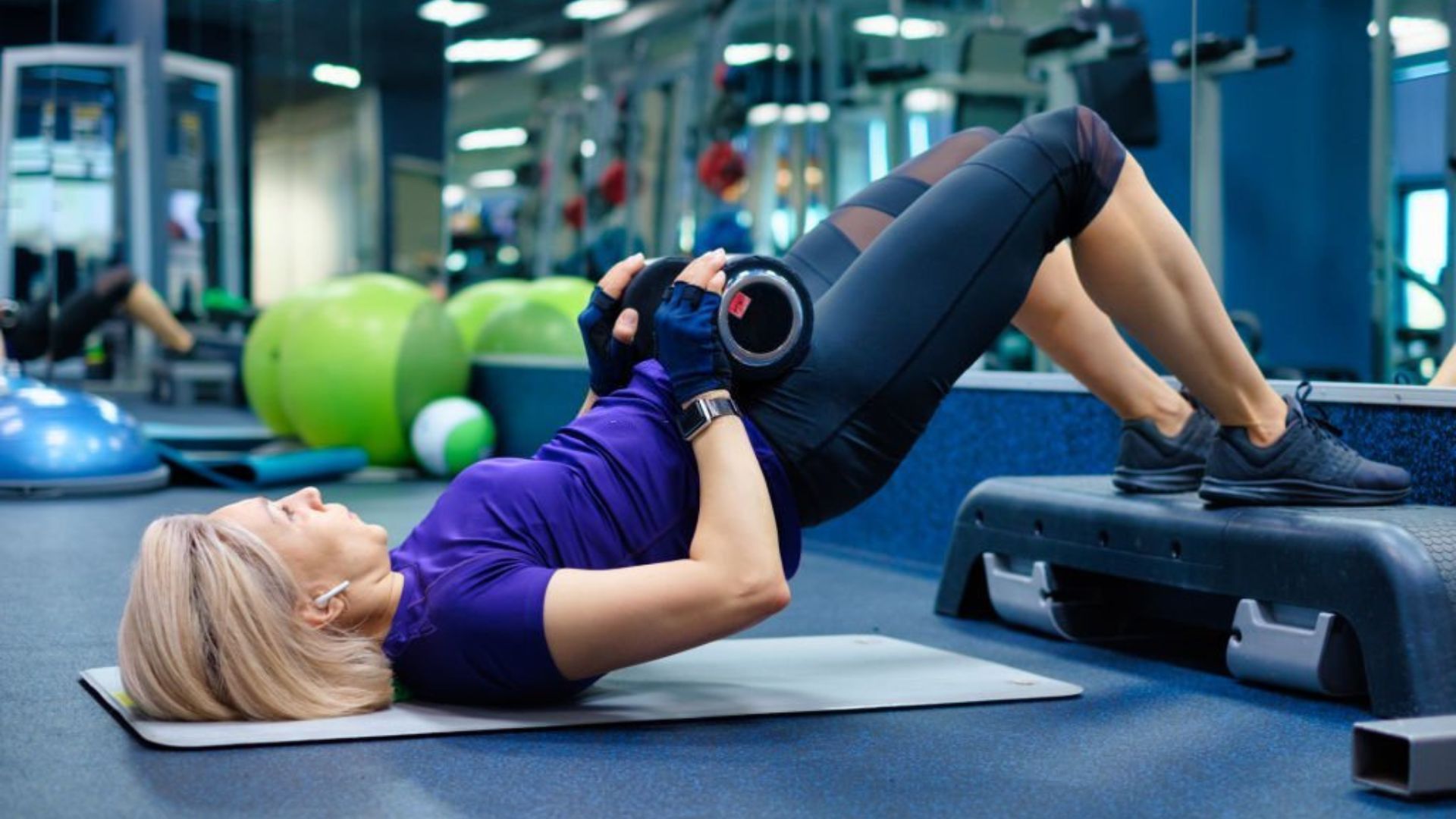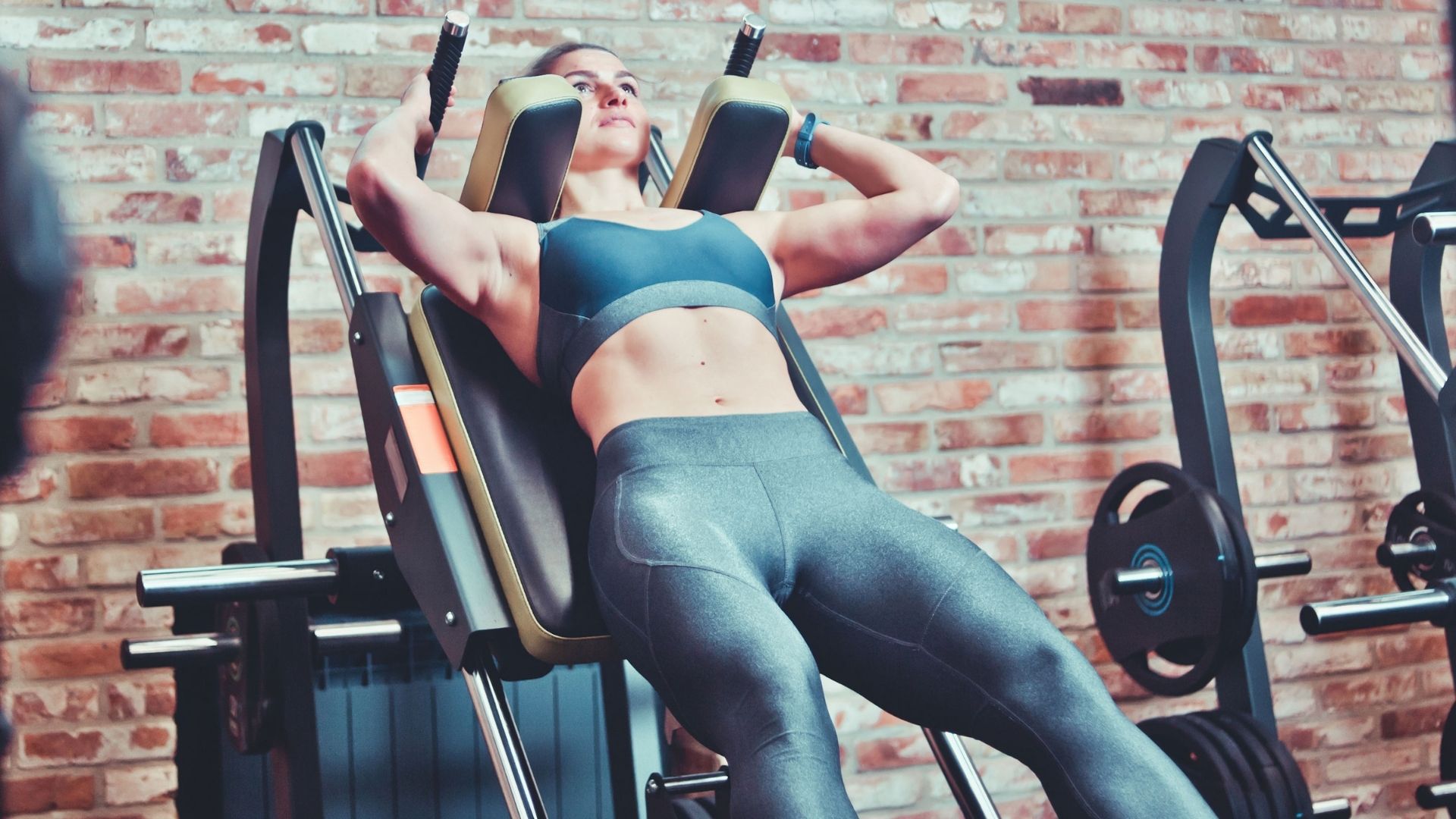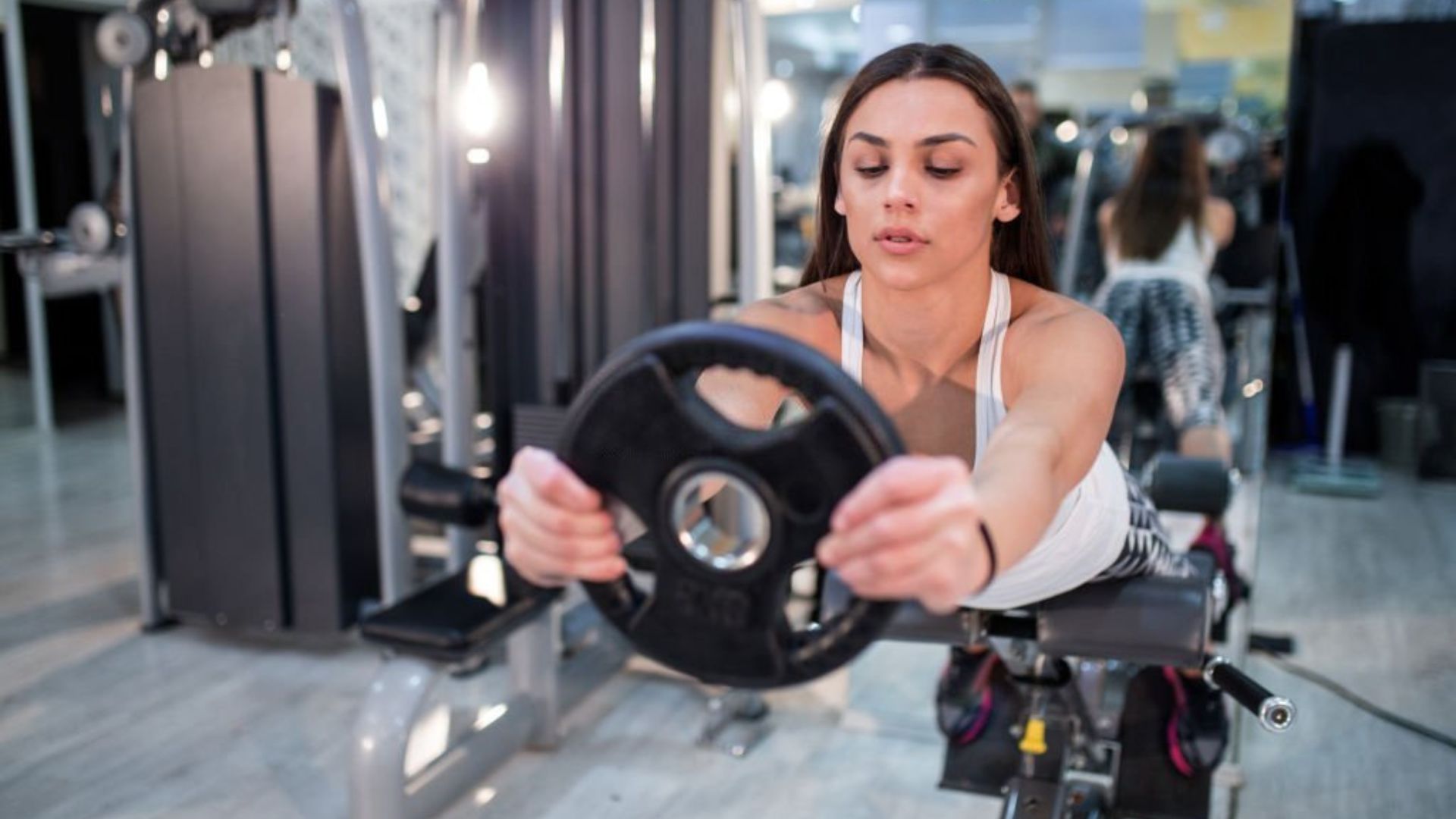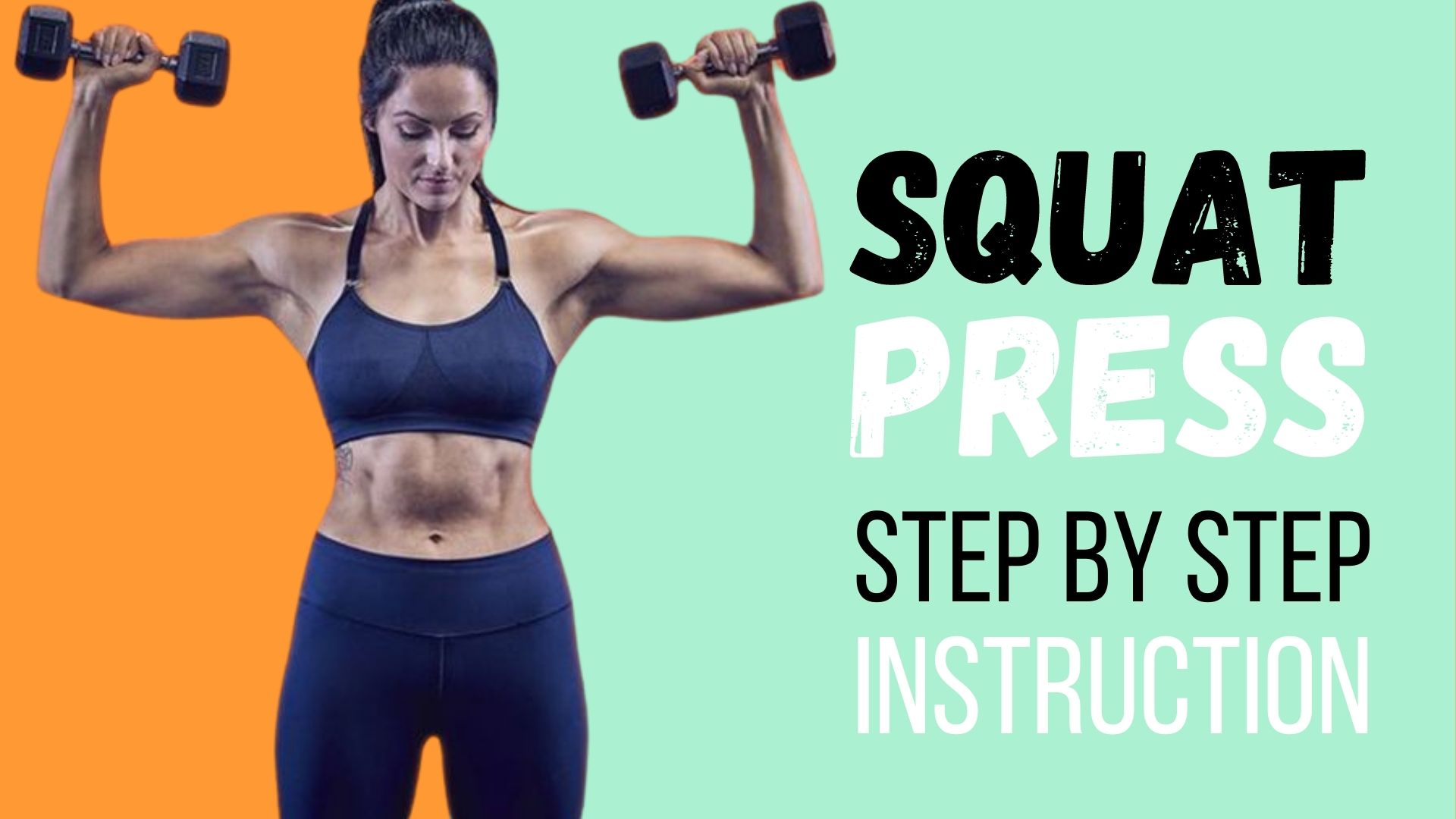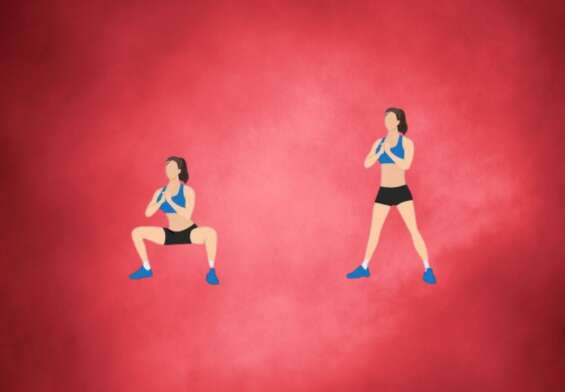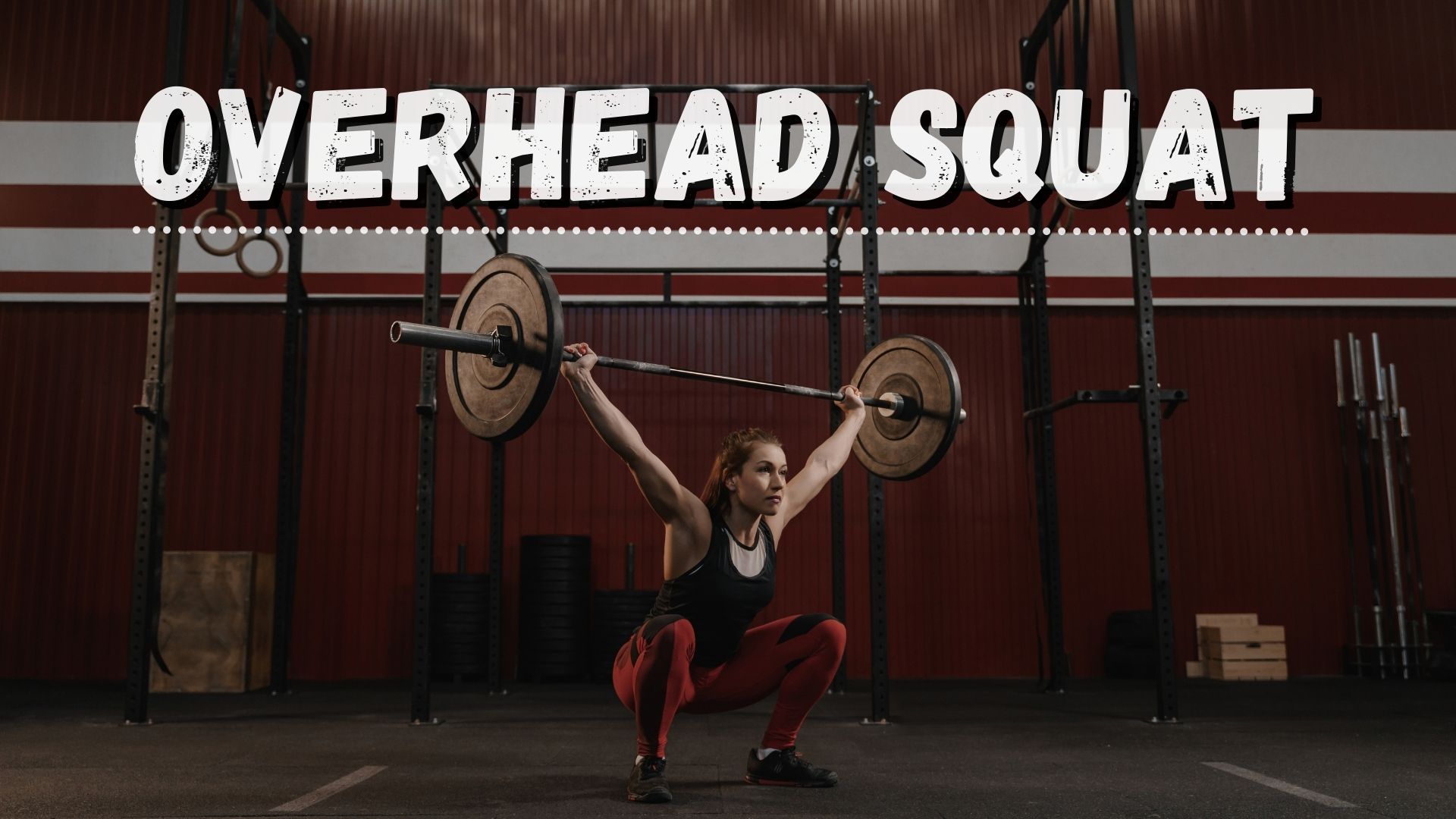
Cable Deadlifts: Build a Strong and Powerful Lower Body
Are you looking for an exercise that can help you build a strong and powerful lower body, particularly your glutes and hamstrings? Look no further than Cable Deadlifts! This exercise is designed to target your lower body muscles, including your glutes, hamstrings, and lower back, while also engaging your core muscles. Here at FitGAG, we’ve put together our comprehensive guide to help you master Cable Deadlifts and achieve your fitness goals.
Exercise Information
Looking for an exercise that will target your glutes, hamstrings, and lower back muscles? Cable Deadlifts are a great option that can help you build strength and definition in these areas. This exercise is similar to the traditional barbell deadlift, but with the added resistance of the cable machine. Let’s explore some general information about this exercise:
Level
Cable Deadlifts are an intermediate to advanced-level exercise that requires a good amount of strength, coordination, and balance. It’s not recommended for beginners, as it involves a lot of movement and can be challenging to perform correctly.
Equipment
To perform Cable Deadlifts, you’ll need a cable machine with a low pulley attachment and a bar or handle attachment. You’ll also need a sturdy bench or box to step onto, as well as a mat or workout surface to cushion your feet during the movement.
Type of Exercise
Cable Deadlifts are a compound exercise that primarily targets the glutes, hamstrings, and lower back muscles.
Cable Deadlifts: Working Muscles
The cable deadlift is a compound exercise that targets the muscles of the lower body, specifically the glutes, hamstrings, and quadriceps. This exercise involves standing facing a cable machine with the cable set at ankle height, grasping the handle and standing up with the weight, mimicking the movement of a traditional deadlift. In this section, we will discuss the primary and secondary muscle groups that are involved during the cable deadlift exercise.
Primary Muscle Group: Glutes and Hamstrings
The primary muscle groups targeted during the cable deadlift are the glutes and hamstrings. The glutes are the muscles located on the buttocks that are responsible for hip extension, while the hamstrings are the muscles located on the back of the thigh that are responsible for knee flexion and hip extension. These muscles work together to produce the powerful movement necessary to lift the weight during the cable deadlift.
Secondary Muscle Group: Quadriceps
In addition to the primary muscle groups, the cable deadlift also engages the quadriceps to a lesser extent. The quadriceps are the muscles located on the front of the thigh that are responsible for knee extension.
By engaging the primary and secondary muscle groups, the cable deadlift provides a comprehensive lower body workout that is effective for building overall strength, power, and endurance. This exercise can be modified to suit different fitness levels by adjusting the weight on the cable, the number of reps, or the angle of the pull.
In the next section, we will discuss the benefits of the cable deadlift exercise in more detail.
Benefits of Cable Deadlifts
Cable deadlifts are a variation of the traditional deadlift that target the lower body muscles. Here are five benefits of incorporating cable deadlifts into your fitness routine:
- Targets the Lower Body Muscles: Cable deadlifts primarily target the glutes, hamstrings, and quadriceps, making it an effective exercise for building lower body strength.
- Offers Variable Resistance: Cable deadlifts offer variable resistance, which means you can adjust the weight to match your strength level, making it a great exercise for beginners and advanced lifters alike.
- Improves Functional Strength: Cable deadlifts can improve functional strength by training the muscles used in everyday activities, such as lifting and bending.
- Can Be Modified: Cable deadlifts can be modified to increase or decrease the difficulty level. For example, you can adjust the height of the cable machine or add weights to make the exercise more challenging.
- Reduces Strain on the Back: Cable deadlifts can reduce strain on the back by using a cable machine instead of a barbell, which can help prevent back injuries.
By incorporating cable deadlifts into your fitness routine, you can enjoy these benefits and more. Whether you’re looking to target your lower body muscles, adjust the resistance, improve functional strength, modify the exercise difficulty, or reduce strain on your back, cable deadlifts are a great exercise to include in your workout routine.
Step By Step Instructions for Cable Deadlifts
The cable deadlift is an exercise that targets your lower body muscles, specifically your glutes, hamstrings, and quads. This exercise is great for building lower body strength and improving your overall stability. Here’s how to perform the exercise correctly:
Starting Position
- Attach a straight bar handle to the cable machine and adjust the cable to a low pulley position.
- Stand facing the machine with your feet shoulder-width apart and your toes pointing forward.
- Grasp the bar with an overhand grip, keeping your hands shoulder-width apart.
Instructions
- Keeping your back straight, bend your knees and lower your hips down towards the ground, pushing your hips back as if sitting down in a chair.
- Lower the bar down towards the ground, keeping it close to your body.
- Pause briefly at the bottom of the movement, squeezing your glutes and hamstrings.
- Stand back up, pushing through your heels and using your glutes and hamstrings to power the movement.
Repeat for the desired number of reps or time, focusing on maintaining proper form and control throughout the exercise.
Cable Deadlifts – Proper Form and Technique
The cable deadlift is an effective exercise to target your lower body muscles, particularly your glutes, hamstrings, and quadriceps. It’s a great exercise to include in your lower body workout routine. Proper form and technique are essential to perform this exercise safely and effectively.
Starting Position
- Stand facing a cable machine with the cable attachment on the floor.
- Place your feet shoulder-width apart and grab the cable handle with both hands.
- Bend your knees and hinge at your hips, lowering your torso to grab the handle with a neutral spine.
Proper Form and Technique
- Engage Your Core: Engage your core muscles by pulling your belly button towards your spine.
- Drive Your Hips Forward: Drive your hips forward by standing up, pulling the cable handle towards your body.
- Squeeze Your Glutes: Squeeze your glute muscles at the end of the movement, holding for a moment.
- Lower the Cable Handle: Slowly lower the cable handle back down to the starting position, keeping your back straight and your core engaged.
- Repeat the Exercise: Repeat the exercise for the desired number of reps.
- Keep Your Back Straight: Keep your back straight throughout the exercise, avoiding any rounding or arching of your spine.
- Breathe: Remember to breathe throughout the exercise. Inhale deeply as you hinge at your hips to grab the handle, and exhale as you drive your hips forward.
By following these tips, you can perform the cable deadlift with proper form and technique, effectively targeting your lower body muscles while also improving your overall strength. Remember to start with a light weight, focus on your form, and gradually increase the weight over time. This exercise is a great addition to any lower body workout routine, helping you achieve stronger and more toned legs and glutes.
Frequency and Progression: How to Progress with Cable Deadlifts for Optimal Leg and Glute Strength
Cable Deadlifts are a great exercise for targeting the legs and glutes, making it an excellent choice for those looking to improve their lower body strength and power. In this section, we will discuss how to properly progress with Cable Deadlifts for optimal leg and glute strength.
Frequency
To effectively train your body with Cable Deadlifts, it is recommended to perform this exercise 1-2 times per week. However, it is important to also incorporate other exercises that target the legs and glutes, such as squats, lunges, and hip thrusts, to ensure overall lower body fitness.
Progressive Overload
As with any exercise, it is important to progressively overload the body over time in order to see continued gains in strength and fitness. One way to progress with Cable Deadlifts is to increase the weight or resistance used, or to increase the number of reps or sets performed. You can also vary the position and angle of the cable machine to target different areas of the legs and glutes.
Periodization
To avoid plateaus in your training and continue seeing progress, it is important to vary the volume and intensity of your Cable Deadlifts workouts over time. One way to do this is through periodization, which involves breaking your training into different phases. For example, you could focus on higher reps and lower intensity for 4-6 weeks to improve endurance, then switch to lower reps and higher intensity for 4-6 weeks to improve power and strength.
Mix It Up
To avoid boredom and ensure you are targeting the legs and glutes from different angles, it is important to mix up your exercises. In addition to Cable Deadlifts, there are several variations that target different muscle groups, such as the Single-Leg Cable Deadlift or the Cable Glute Kickback. You can also vary the position and angle of your exercises to target different areas of the body.
Track Your Progress
To ensure you are making progress and staying on track with your Cable Deadlifts workouts, it is important to track your progress. Keep a workout journal or use a fitness app to log the weight or resistance used, as well as the number of reps and sets performed. This will help you identify areas where you need to improve and keep you motivated to continue pushing yourself.
Incorporating Cable Deadlifts exercises into your workout routine can be a great way to improve overall leg and glute strength. By following these tips for frequency, progressive overload, and periodization, you can ensure that you are effectively training your body and reaching your fitness goals.
Mistakes of Cable Deadlifts
Cable deadlifts are a variation of the traditional deadlift exercise that uses a cable machine. This exercise primarily targets the muscles in your legs and back, but performing it with improper form can lead to discomfort or injury. Here are five common mistakes to avoid when performing cable deadlifts:
- Not using the proper form: Not using the proper form during cable deadlifts can reduce the effectiveness of the exercise and put unnecessary strain on your back. Instead, focus on keeping your back straight, your core engaged, and your knees slightly bent throughout the movement.
- Using too much weight: Using too much weight during cable deadlifts can make it difficult to maintain proper form, increasing your risk of injury. Instead, use a weight that challenges you while still allowing you to maintain proper form.
- Not engaging your glutes and hamstrings: Not engaging your glutes and hamstrings during cable deadlifts can reduce the effectiveness of the exercise and limit the amount of muscle activation. Instead, focus on driving your hips forward as you stand up, engaging your glutes and hamstrings.
- Not using a full range of motion: Not using a full range of motion during cable deadlifts can reduce the effectiveness of the exercise and limit the amount of muscle activation. Instead, focus on lowering the weight all the way down to the ground and standing up straight at the top of the movement.
- Not controlling the movement: Not controlling the movement during cable deadlifts can reduce the effectiveness of the exercise and make it more difficult to maintain proper form. Instead, focus on lifting the weight up and lowering it down slowly and with control.
By avoiding these common mistakes, you can safely and effectively perform cable deadlifts to strengthen and tone your legs and back. Remember to always listen to your body and stop the exercise if you experience any discomfort or pain.
Variations of the Cable Deadlift: Take Your Leg Workout to the Next Level
The cable deadlift is a popular exercise that targets your hamstrings, glutes, and lower back muscles. Here are some variations to take your leg workout to the next level:
Single-Leg Cable Deadlift
This variation adds an extra challenge to the exercise by requiring you to perform it with one leg at a time.
- Stand facing the cable machine and grab the handle with one hand.
- Lift one leg off the ground and hinge forward at the hips, keeping your back straight and core engaged.
- Squeeze your glutes and hamstrings to return to standing position.
- Repeat with the other leg.
Staggered Stance Cable Deadlift
This variation targets your glutes and hamstrings while also engaging your core.
- Stand facing the cable machine with your feet staggered, one foot in front of the other.
- Grab the handle with one hand and hinge forward at the hips, keeping your back straight and core engaged.
- Squeeze your glutes and hamstrings to return to standing position.
- Repeat with the other leg in front.
Sumo Stance Cable Deadlift
This variation targets your inner thighs in addition to your glutes and hamstrings.
- Stand facing the cable machine with your feet wider than hip-width apart and your toes turned out.
- Grab the handle with both hands and hinge forward at the hips, keeping your back straight and core engaged.
- Squeeze your glutes and hamstrings to return to standing position.
Cable Deadlift with Row
This variation targets your back muscles in addition to your glutes, hamstrings, and lower back.
- Stand facing the cable machine and grab the handle with both hands.
- Hinge forward at the hips, keeping your back straight and core engaged.
- As you return to standing position, bend your elbows and row the handle towards your chest.
Cable Romanian Deadlift
This variation targets your hamstrings and glutes while also engaging your lower back.
- Stand facing the cable machine and grab the handle with both hands.
- Hinge forward at the hips, keeping your back straight and core engaged.
- Lower the handle down your legs until you feel a stretch in your hamstrings, then squeeze your glutes and hamstrings to return to standing position.
Incorporating these variations into your leg workouts can help to keep your routine fresh and challenging, while also targeting different areas of your leg muscles. As always, make sure to use proper form and technique to avoid injury.
Cable Deadlifts: 5 Alternatives to Strengthen Your Lower Body
Cable deadlifts are a variation of the traditional deadlift exercise that target the lower body muscles, specifically the glutes, hamstrings, and quadriceps. However, if you want to mix up your routine or target other areas of the lower body, there are plenty of alternatives that can be just as effective. In this section, we’ll explore five alternatives to cable deadlifts that you can try today.
Barbell Deadlifts
Barbell deadlifts are a great exercise that targets the lower body muscles, as well as the core and back muscles.
- To perform barbell deadlifts, stand with a barbell in front of you, with your feet shoulder-width apart.
- Bend your knees and hinge at your hips to lower your body down to the barbell.
- Grip the barbell with your hands shoulder-width apart and lift the barbell up towards your hips, feeling the squeeze in your lower body muscles.
- Lower the barbell back down to the starting position and repeat for 3-5 sets of 8-10 reps.
Bulgarian Split Squats
Bulgarian split squats are a great exercise that target the lower body muscles, specifically the glutes, hamstrings, and quadriceps.
- To perform Bulgarian split squats, stand in front of a bench with your back to the bench.
- Place one foot on the bench behind you and lower your body down towards the ground, feeling the squeeze in your lower body muscles.
- Stand back up to the starting position and repeat for 3-5 sets of 8-10 reps on each leg.
Hip Thrusts
Hip thrusts are a great exercise that target the glutes and hamstrings.
- To perform hip thrusts, sit on the ground with your back against a bench and a barbell across your hips.
- Lift your hips up towards the ceiling, feeling the squeeze in your glutes and hamstrings.
- Lower your hips back down to the starting position and repeat for 3-5 sets of 8-10 reps.
Box Jumps
Box jumps are a great exercise that target the lower body muscles, specifically the glutes, hamstrings, and quadriceps.
- To perform box jumps, stand in front of a box or step and jump up onto the box, feeling the squeeze in your lower body muscles.
- Step back down to the starting position and repeat for 3-5 sets of 8-10 reps.
Glute Bridge
The glute bridge is a great exercise that targets the glutes and hamstrings.
- To perform the glute bridge, lie on your back with your knees bent and feet flat on the ground.
- Lift your hips up towards the ceiling, feeling the squeeze in your glutes and hamstrings.
- Lower your hips back down to the starting position and repeat for 3-5 sets of 8-10 reps.
Incorporating alternatives to cable deadlifts into your routine is a great way to strengthen your lower body while also mixing up your workout. These five exercises target different areas of the lower body and can help you achieve your fitness goals. Give them a try and see how they work for you! Remember to always listen to your body and consult with a healthcare professional if you experience any pain or discomfort.
Cable Deadlifts: Tips and Tricks for Strengthening Your Lower Body
Cable Deadlifts are an excellent exercise for strengthening your lower body, particularly your glutes, hamstrings, and quadriceps. This exercise is commonly performed using a cable machine, but it can also be done using dumbbells or a barbell. In this section, we’ll share some tips and tricks to help you perform Cable Deadlifts correctly and get the most out of it.
- Assume the Starting Position: Begin by standing in front of the cable machine, with your feet shoulder-width apart. Attach the handle to the cable and hold it in both hands, with your palms facing down.
- Choose the Right Weight: Choose a weight that’s appropriate for your fitness level. If you’re a beginner, start with a lighter weight, and gradually progress to a heavier weight as your lower body muscles strengthen.
- Use Proper Form: Use proper form when performing the Cable Deadlifts, which means keeping your back straight, your core engaged, and your knees slightly bent.
- Control Your Movements: Control your movements throughout the exercise, avoiding any sudden or jerky motions.
- Squeeze Your Glutes and Hamstrings: Squeeze your glutes and hamstrings as you pull the handle up towards your hips. Hold for a few seconds at the end of the movement to maximize muscle engagement.
- Breathe Properly: Breathe out as you pull the handle up towards your hips, and breathe in as you release the handle back to the starting position.
- Choose the Right Surface: Choose a surface that’s appropriate for your fitness level. If you’re using dumbbells or a barbell, make sure the surface you’re using is stable and doesn’t move.
- Don’t Overdo It: Cable Deadlifts can be a challenging exercise, so don’t overdo it. Start with a few reps and gradually increase the number of reps and sets as your lower body muscles strengthen.
- Stretch Your Body: Stretching your body before and after the Cable Deadlifts can help prevent muscle strain and injury. Stretch your body by performing standing quad and hamstring stretches.
- Stay Consistent: Consistency is the key to success with any exercise routine. Incorporate the Cable Deadlifts into your lower body-strengthening routine, and gradually increase the number of reps and sets as your lower body muscles strengthen.
Incorporating these tips and tricks into your Cable Deadlifts routine can help you get the most out of this exercise and achieve better lower body muscle strength. Remember to always maintain proper form, breathe properly, and listen to your body. With time and practice, you’ll be able to perform the Cable Deadlifts like a pro and achieve your fitness goals.
Incorporating Cable Deadlifts into Your Workout Routine for Maximum Effect
Cable deadlifts are a great exercise that target the muscles of the lower body, specifically the glutes, hamstrings, and quadriceps. Here are some tips to help you incorporate cable deadlifts into your workout routine for maximum effect:
- Focus on the movement: As you lift the handles up towards your hips, make sure you’re not rounding your back or leaning too far forward. Keep your movements controlled and within a comfortable range of motion.
- Increase the intensity: As you get comfortable with cable deadlifts, you can increase the intensity by adjusting the weight on the machine or by performing the exercise with a single leg at a time.
- Incorporate other lower body exercises: To further improve your lower body strength, incorporate other exercises such as squats or lunges into your workout routine.
- Be mindful of your form: It’s important to maintain proper form while performing cable deadlifts. Keep your core engaged and your back straight throughout the exercise.
- Don’t push yourself too hard: Cable deadlifts can be a challenging exercise, so it’s important to listen to your body and not push yourself too hard, especially if you’re new to this exercise.
By incorporating these tips into your workout routine, you’ll be well on your way to maximizing the benefits of cable deadlifts and achieving a stronger, more toned lower body.
Ultimate Workout Plan for Cable Deadlifts
Cable deadlifts are a great exercise that targets your lower back, glutes, hamstrings, and quads. It involves using a cable machine to perform a deadlift motion while standing. Here’s a one-week workout plan to help you master the cable deadlift.
Day 1: Legs and Glutes
- Warm-up: 5-10 minutes of light cardio
- Barbell Squats: 3 sets x 10 reps
- Barbell Lunges: 3 sets x 10 reps
- Cable Deadlifts: 3 sets x 12 reps
- Leg Press: 3 sets x 12 reps
- Glute Bridges: 3 sets x 12 reps
- Cool-down: 5-10 minutes of stretching
Day 2: Rest Day
Day 3: Back and Biceps
- Warm-up: 5-10 minutes of light cardio
- Barbell Rows: 3 sets x 10 reps
- Cable Pulldowns: 3 sets x 10 reps
- Cable Deadlifts: 3 sets x 12 reps
- Dumbbell Curls: 3 sets x 12 reps
- Hammer Curls: 3 sets x 12 reps
- Cool-down: 5-10 minutes of stretching
Day 4: Rest Day
Day 5: Full Body
- Warm-up: 5-10 minutes of light cardio
- Squats: 3 sets x 10 reps
- Deadlifts: 3 sets x 10 reps
- Cable Deadlifts: 3 sets x 12 reps
- Pull-ups: 3 sets x 10 reps
- Push-ups: 3 sets x 10 reps
- Cool-down: 5-10 minutes of stretching
Day 6: Rest Day
Day 7: Legs and Glutes
- Warm-up: 5-10 minutes of light cardio
- Barbell Squats: 3 sets x 10 reps
- Barbell Deadlifts: 3 sets x 10 reps
- Cable Deadlifts: 3 sets x 12 reps
- Leg Press: 3 sets x 12 reps
- Glute Bridges: 3 sets x 12 reps
- Cool-down: 5-10 minutes of stretching
Incorporating cable deadlifts into your weekly workout routine can help you improve your lower body strength and overall muscle mass. Remember to maintain proper form and technique, and gradually increase the weight and number of reps as you progress. Happy cable deadlifting!
Conclusion
Cable Deadlifts is undoubtedly a challenging exercise that requires proper form and technique to avoid injury and maximize results. However, the benefits of this exercise are significant, from building a strong and powerful lower body to improving your core stability and overall fitness level. By using a cable machine to add resistance, you can target your lower body muscles from different angles and challenge yourself with different weights. Cable Deadlifts can be done at the gym or at home, making it a versatile exercise option. So, if you’re looking to build a strong and powerful lower body, give Cable Deadlifts a try and see the results for yourself. Thanks for reading, and keep fit with FitGAG!




